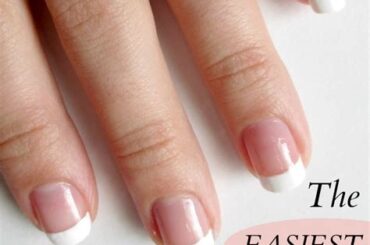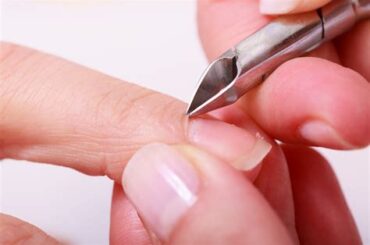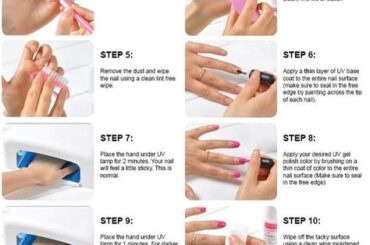Get expert tips for healthy nails: moisturizing, avoiding water exposure, using cuticle oil, protecting with gloves, nail-friendly polish, trimming/filing techniques, balanced diet, professional treatments. Give your nails the care they deserve.
Moisturizing your nails
During the colder winter months, it’s important to pay extra attention to the moisture levels in your nails. The dry, cold air can leave your nails brittle and prone to breakage. To combat this, moisturizing your nails regularly is essential. Make sure to use a high-quality hand and nail cream that contains ingredients like shea butter and vitamin E to keep your nails hydrated and strong.
Additionally, you can also apply a small amount of cuticle oil to your nails before bed to help seal in moisture overnight. This will prevent your nails from becoming dry and brittle, ultimately leading to healthier, stronger nails during the winter months.
Lastly, remember to wear gloves when doing chores or working outside in the cold. This will not only protect your hands from the harsh elements, but it will also help lock in the moisture from your hand and nail cream, ultimately keeping your nails healthy and strong.
Avoiding excessive water exposure
During the winter months, it’s important to be mindful of the amount of water exposure your nails are getting. Excessive water exposure can lead to weakened and brittle nails, as well as peeling and splitting. To avoid these issues, it’s essential to take proactive steps to protect your nails from the harsh effects of water.
One way to avoid excessive water exposure is to wear gloves when doing household chores that involve water, such as washing dishes or cleaning. Gloves create a barrier between your nails and the water, helping to prevent them from becoming overly saturated and prone to damage.
In addition to wearing gloves, it’s also important to be mindful of the types of products you use on your hands and nails. Harsh soaps and sanitizers can strip the nails of their natural oils, making them more susceptible to the negative effects of water exposure. Using moisturizing hand soaps and gentle cleansers can help to minimize the impact of water on your nails.
Using cuticle oil regularly
One of the most important steps in nail care, especially during the winter months, is using cuticle oil regularly. Cuticle oil helps to moisturize and nourish the nail bed, preventing dryness, cracking, and peeling. By applying cuticle oil daily, you can keep your nails and cuticles healthy and hydrated, even in the harshest winter conditions.
Regular use of cuticle oil can also promote nail growth and strength, as it helps to improve the overall health of the nails. When massaged into the cuticles and nails, the oil can stimulate blood flow, leading to healthier, stronger nails that are less prone to breakage and splitting.
In addition to using cuticle oil on a daily basis, it’s important to choose a high-quality oil that is free from harsh chemicals and artificial fragrances. Look for natural oils such as jojoba, almond, or argan oil, which are known for their nourishing and moisturizing properties. By incorporating cuticle oil into your daily nail care routine, you can keep your nails looking and feeling their best, even during the coldest winter months.
Protecting nails with gloves
In the winter months, it’s important to protect your nails from harsh weather conditions that can lead to dryness and breakage. One way to do this is by wearing gloves when you’re outdoors. Gloves act as a barrier between your nails and the cold, wind, and snow, helping to retain moisture and prevent damage. It’s especially crucial to wear gloves when doing activities like shoveling snow or de-icing your car, as these tasks can expose your nails to extreme temperatures and moisture.
When selecting gloves for nail protection, opt for a pair made of soft, breathable fabric that won’t cause excessive sweating or friction. Avoid gloves with rough or scratchy textures, as these can potentially snag or scratch your nails. Additionally, be mindful of the fit of the gloves – they should be snug enough to stay in place and provide warmth, but not so tight that they restrict circulation or cause discomfort.
By consistently wearing gloves when venturing outdoors during the winter, you can help shield your nails from the elements and maintain their health and strength. Don’t underestimate the impact that even a simple pair of gloves can have on the overall well-being of your nails.
Choosing nail-friendly polish
When it comes to choosing nail-friendly polish, it’s important to look for products that prioritize the health of your nails. Opt for polishes that are free of harmful chemicals, such as formaldehyde, toluene, and dibutyl phthalate, which can weaken and damage the nails over time. Look for polishes that are labeled as 5-free or 10-free, indicating that they are free of these toxic ingredients. This will help to protect the integrity of your nails and keep them healthy.
In addition to avoiding harmful chemicals, consider opting for nail polishes that contain fortifying ingredients to help strengthen and nourish the nails. Look for polishes that are enriched with vitamins, minerals, and proteins to provide added benefits to your nails while adding a pop of color. These nourishing ingredients can help to improve the overall health and appearance of your nails, making them less prone to breakage and damage.
Lastly, when choosing nail-friendly polish, consider the longevity and wear-time of the product. Look for polishes that offer long-lasting, chip-resistant formulas to minimize the need for frequent touch-ups. This can help to reduce the amount of stress and trauma that your nails experience, as constant reapplication and removal of polish can weaken the nails over time. By choosing a durable, nail-friendly polish, you can maintain the health and strength of your nails while still enjoying a beautiful, polished look.
Trimming and filing techniques
Keeping your nails trimmed and filed is an essential part of nail care, especially during the winter months. When nails are too long, they are more prone to breakage and can become a breeding ground for bacteria. Use a sharp pair of nail clippers to trim your nails straight across, and then use a file to smooth out any rough edges. Avoid using a back-and-forth sawing motion with the file, as this can weaken the nails.
It’s important to file your nails in one direction only, as this prevents splitting and peeling. Start from the outer edge and pull the file towards the center, working on one side and then the other. This technique helps to maintain the strength and integrity of the nail. Additionally, be sure to use a fine-grit file, as coarse files can cause more harm than good.
When filing, aim for a rounded or square shape, as these are less likely to catch on clothing or other objects. Avoid overly pointy or sharp shapes, as they are more prone to breakage. Remember to file gently and avoid applying too much pressure, as this can cause the nails to weaken and become brittle.
Maintaining a balanced diet
One of the most important factors in maintaining healthy nails is by ensuring you have a balanced diet. Foods rich in protein, such as lean meats, fish, and eggs are essential for strong and healthy nails. Additionally, incorporating biotin-rich foods like nuts, seeds, and whole grains can aid in nail growth and strength. Including iron-rich foods like spinach, lentils, and red meat can also prevent nail brittleness and breakage.
Furthermore, consuming foods high in vitamins and minerals such as fruits, vegetables, and dairy products are essential for overall nail health. Foods rich in vitamin C, such as oranges, strawberries, and kiwi, can help facilitate collagen production, which is beneficial for nail strength. Likewise, foods rich in vitamin E like avocado, nuts, and seeds can improve overall nail health by preventing dryness and promoting growth.
Implementing a well-rounded diet that includes omega-3 fatty acids found in salmon, chia seeds, and walnuts can also contribute to nail health by preventing brittleness and promoting hydration. By maintaining a balanced diet that incorporates these essential nutrients, you can ensure that your nails remain strong, healthy, and resistant to environmental damage, especially during the winter months when nails are more prone to dryness and breakage.
Giving nails a break
During the winter months, our nails can become dry and brittle due to the cold, harsh weather and indoor heating. This can lead to breakage, splitting, and overall unhealthy nails. To combat this, it’s important to give our nails a break from any harsh treatments or products that can further damage them. It’s important to make sure that our nails get some time to breathe and recover from any excessive use of nail polish or acrylics.
One way to give your nails a break is to go au natural and skip the nail polish for a while. This allows your nails to regain their natural strength and moisture. Another tip is to avoid using harsh chemicals and nail polish removers that can further dry out and weaken your nails. Instead, opt for natural, gentle nail care products that nourish and strengthen your nails.
In addition to skipping the nail polish, it’s also important to avoid excessive filing or buffing of the nails. Overdoing it can lead to thinning and weakening of the nails. Instead, opt for gentle filing and only when necessary. This will help maintain the strength and integrity of your nails.
Professional nail care treatments
Professional nail care treatments are essential for maintaining the health and beauty of your nails, especially during the harsh winter months. One of the most effective treatments is a regular manicure and pedicure performed by a skilled nail technician. This not only keeps your nails looking polished and well-groomed, but also allows for thorough cleaning and maintenance of the cuticles and nail beds.
Another professional treatment to consider is a paraffin wax treatment, which can help to soften and moisturize the skin and nails. This luxurious treatment involves the hands or feet being dipped in warm paraffin wax, creating a soothing and hydrating experience. It’s a great way to combat dry and cracked skin during the winter.
Lastly, another beneficial professional nail care treatment is the application of strengthening and nourishing nail treatments, such as gel or acrylic nails. These treatments can help to protect and strengthen the natural nails, reducing the risk of breakage and damage, especially in the cold, dry winter weather.
Frequently Asked Questions
How does winter weather affect the health of nails?
Winter weather can lead to dry, brittle nails due to the lack of moisture in the air. The cold temperatures and indoor heating can also contribute to this problem.
What can I do to keep my nails healthy during the winter?
To keep your nails healthy during the winter, you can use cuticle oil to moisturize your nails, wear gloves to protect them from the cold, and avoid using harsh chemicals or nail products.
Should I change my nail care routine in the winter?
Yes, you may need to change your nail care routine in the winter to focus more on moisturizing and protecting your nails from the harsh weather conditions.
Can the cold weather cause nail fungus or infections?
Yes, the cold weather can create a damp environment that is conducive to nail fungus and infections. It’s important to keep your nails clean and dry to prevent this from happening.
Are there any specific vitamins or supplements that can help with nail health during the winter?
Yes, taking biotin supplements or consuming foods rich in biotin, such as eggs and nuts, can help improve the strength and health of your nails during the winter months.
Is it necessary to visit a professional manicurist during the winter?
While it’s not necessary, visiting a professional manicurist can be beneficial, as they can provide treatments and tips specifically tailored to keeping your nails healthy during the winter.
Can wearing nail polish help protect my nails during the winter?
Wearing nail polish can provide a protective layer for your nails, but be sure to use a base coat and avoid using nail polish remover with harsh chemicals to prevent further damage.





